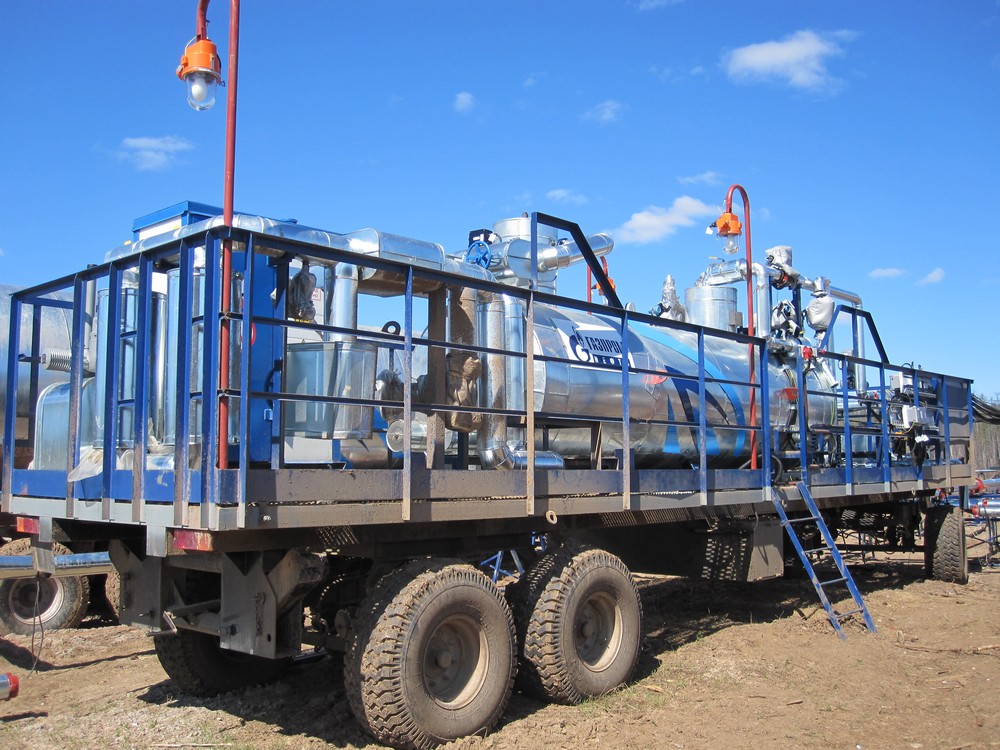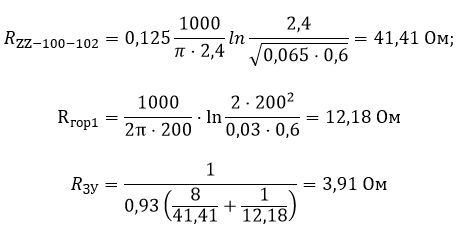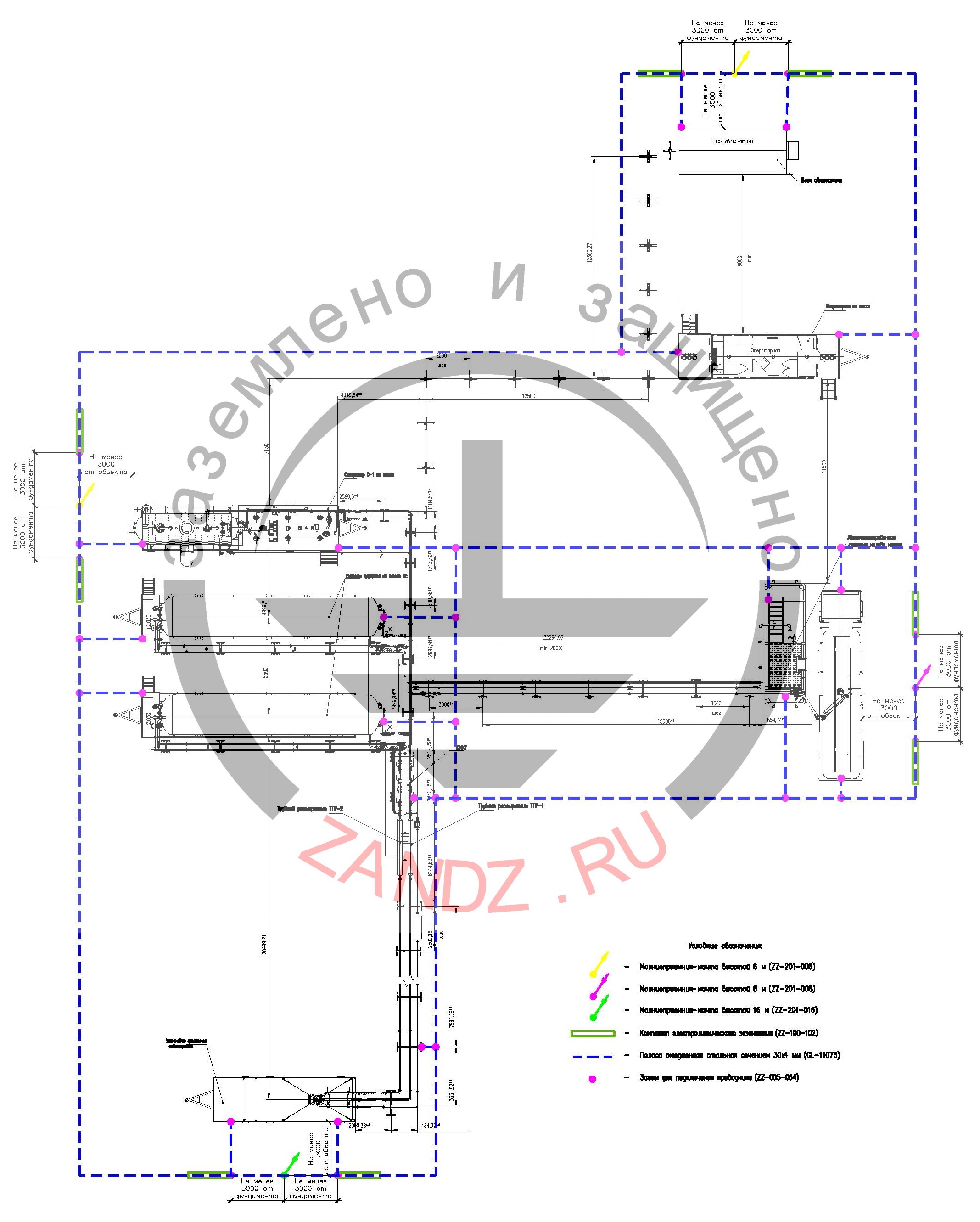
Mobile installations for the oil and gas industry require particularly reliable lightning protection, since they contain combustible materials that can instantly lead to fire and explosion.
Recently, the ZANDZ Technical Center received the task of calculating lightning protection of a mobile oil laboratory, ensuring a system reliability of at least 0.95. Our technical experts offered a solution, which we are sharing with you.
Example of calculation of lightning protection for a mobile installation (oil laboratory)
Object: mobile installation.

Figure 1 - Object plan.
Task: Perform calculations of the grounding system and lightning protection of a mobile installation.
Protection of buildings and structures against lightning discharges is ensured by lightning rods. A lightning rod is a device rising above the facility that diverts lightning current into the ground without entering the facility. It consists of a lightning rod which directly takes the lightning discharge upon itself, a down conductor and a ground electrode.
Solutions for meeting the requirements for the lightning protection system of a mobile oil laboratory:
1. Lightning protection is carried out in accordance with EIC 7th edition., IS 153-34.21.122-2003 "Instructions for lightning protection of buildings, structures and industrial communications" (hereinafter IS) and AD 34.21.122-87 "Instructions for lightning protection of buildings and structures" (hereinafter AD).
2. The object refers to category 2 of lightning protection. System reliability must be not less than 0,95.
3. Lightning protection of the facility is carried out using 2 stand-alone lightning rods 6 m high, 1 stand-alone lightning rod 8 m high and 1 stand-alone lightning rod 16 m high on the foundations (ZZ-201-006, ZZ-201-008, ZZ- 201-016).
4. Installation of a common grounding device consisting of 8 sets of electrolytic grounding (ZZ-100-102). The ground electrodes are installed with a pitch of at least 6 x 6 m. The sets are combined using a copper-bonded steel tape with the cross section of 30 x 4 mm. The distance from the electrode to the communication lines and foundations must be at least 3 m. The depth is 0.6 m.
5. A clamp ZZ-005-064 is used to connect the tape along the length, to attach metal structures and communications;
6. To protect buildings from the secondaries of lightning, the following measures should be provided:
a) metal enclosures of all equipment and devices installed in the buildings to be protected must be connected to the grounding device of electrical installations;
b) jumpers made of steel tape with a cross section of at least 24 mm² should be performed inside the buildings between pipelines and other extended metal structures in places of their convergence at the distance of at least 10 cm;
c) in the connections of elements of pipelines or other extended metal objects, they provide transition resistance of not more than 0.03 ohms per contact;
d) protection against the import of high potential through external ground and underground communications is carried out by attaching them at the input to the ground electrode of electrical installations or the ground electrode protecting against direct lightning strikes.
7. In case of presence of the existing grounding device, they should be united into one grounding device in accordance with EIC p.1.7.55.
Results of the calculation carried out with the software developed by the OJSC "Energy Institute to the name of G.M. Krzhizhanovsky (OJSC "ENIN"):
Density of lightning strikes into the ground - 4 strikes / sq. km per year;
Full number of strikes into the system – 0.050 (once in 20 years);
The total number of breakthroughs is 0.0022 (once every 455 years);
The reliability of the system is 0.957;
Probability of a breakthrough into all the system objects - 0.043
Grounding device resistance calculation:

The design resistance of the grounding device is 3,91 ohms.
Figure 2 shows the arrangement of equipment.
Table 1 gives the list of the required equipment and materials.

Figure 2- Arrangement of equipment for grounding and lightning protection on an asphalt-concrete factory
Table 1 - List of need in materials.
| № | Image | Product item | Product | Quantity, pcs. |
| 1. |  |
ZZ-201-006 | ZANDZ Vertical lightning rod 6 m (galvanized steel; with embedded fittings for placing under the foundation) | 2 |
| 2. |  |
ZZ-201-008 | ZANDZ Vertical lightning rod 8 m (galvanized steel; with embedded fittings for placing under the foundation) | 1 |
| 3. |  |
ZZ-201-016 | ZANDZ Vertical lightning rod 16 m (galvanized steel; with embedded fittings for placing under the foundation) | 1 |
| 4. |  |
ZZ-100-102 | ZANDZ Electrolytic grounding kit (horizontal; 3 m) | 8 |
| 5. |  |
ZZ-005-064 | ZANDZ Clamp for connecting conductor (up to 40 mm) | 50 |
| 6. |  |
ZZ-007-030 | ZANDZ Waterproof tape | 13 |
| 7. |  |
GL-11075-50 | GALMAR Copper-bonded tape (30 * 4 mm / S 120 mm²; coil of 50 meters) | 8 |
Do you have any questions about grounding and lightning protection of mobile units? Please contact our ZANDZ Technical center!
See also:

